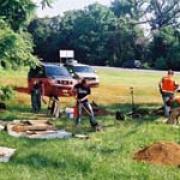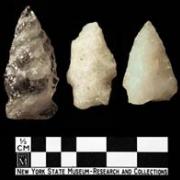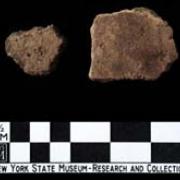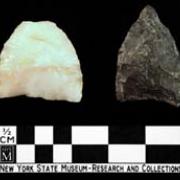The Paul J. Higgins site is a lithic site in the Town of Cortlandt, northwestern Westchester County. The initial identification of the site was made in the early fall of 2007 in advance of future roadwork by the Department of Transportation. The following two summers, archaeologists returned to the Paul J. Higgins site to complete Phase II and Phase III excavations, to mitigate deposits prior to impact. The site was determined to be a small lithic production site due to several factors: primarily on the amount of stone tool remains, lack of prehistoric architecture, and the lack of features relating to food storage and preparation.
Some 1,733 prehistoric and historic artifacts were recovered. The overwhelming majority of artifacts recovered (88%) were prehistoric, and of those, 99% related to stone tool production/refining, with less than 1% of those prehistoric artifacts relating to food preparation and storage. Included with the types of stone tools recovered include: projectile points, bifaces, hammerstones, choppers, and a drill. The lack of architecture or architectural elements merely means that was no evidence of a formal structure, which would include postholes. The lack of food preparation and storage refers to the fact that no features relating to the making and storing of food was found, which includes features such as hearths or storage pits. A few fragments of prehistoric pottery were recovered, but they were greatly overshadowed by the stone tools.







